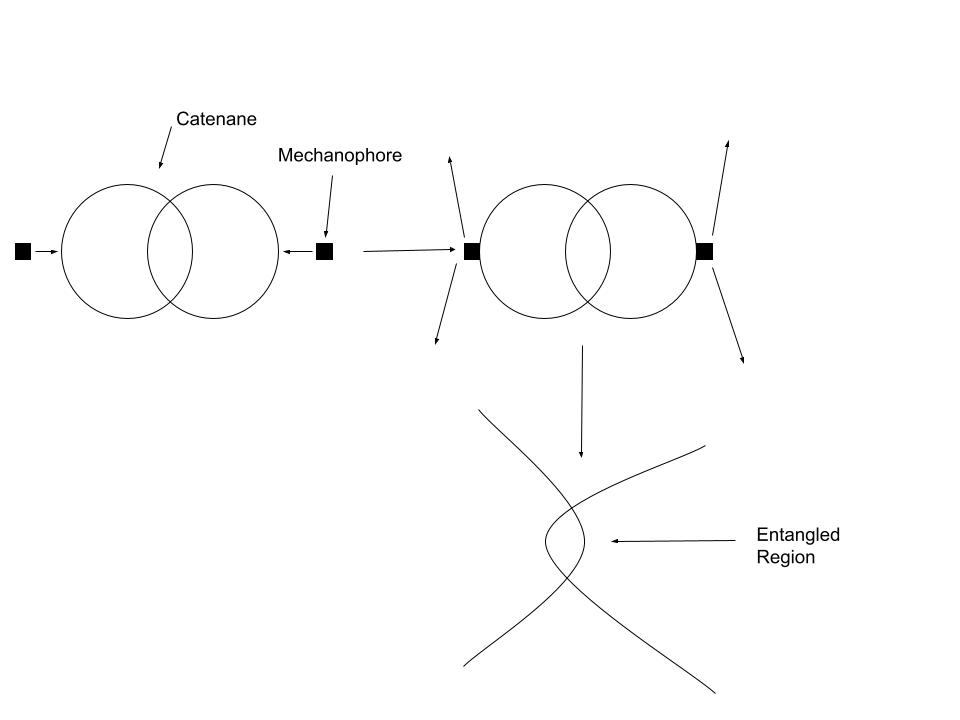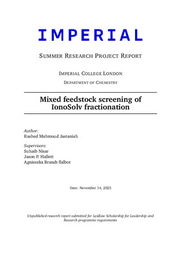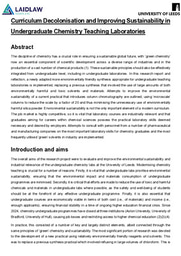Project Outline: Synthesizing Catenanes With Mechanophores to Create Entangled Polymer Networks to Minimize Environmental Harm

Synthesizing Catenanes With Mechanophores to Create Entangled Polymer Networks to Minimize Environmental Harm
Supervisor/Team Members
My supervisor will be Dr. Luis Campos in the Department of Chemistry. My graduate student mentors will be Valentina Malave and Shixuan Wei.
Project Background
Currently, the crosslink density of a certain polymer determines several characteristics such as creep resistance (the ability to withstand deformation with stress), toughness, stiffness, etc. According to Nian and colleagues, higher crosslink density correlates with decreasing creep resistance (Nian et al., 2025). This decreased creep resistance over time leads to environmental problems as recyclability declines due to the heavy deformation. Thus, these environmental concerns necessitate newer methods to strengthen polymer networks and the recyclability of these materials. Forming entanglements within polymer networks can decentralize stress within the network, intertwining polymer networks and “enhancing toughness.” These tangled systems are known as tanglemers, and they can be considered as a type of elastomer. One experiment done by Wang compares two elastomer networks with differing crosslink density and finds that networks made with weaker crosslinkers are harder to tear than those with stronger crosslinkers (Wang et al., 2021). Zhukhovitskiy’s group notes that entangled networks are 30% stiffer than control materials (Wang et al., 2024). Thus, there is a needed effort to create elastomers with a higher density of entanglements. These entangled networks can then be utilized as hydrogels, rubbers, or elastic polymers. In the current research that is being done in my lab, the catenanes that are being synthesized have hydrophobic components, thus signaling that these polymer networks will become more rubbery.
The work in this project focuses on synthesizing catenanes (structures with intertwining nanohoops or cyclical structures) with mechanophores in order to create polymer networks with entanglements. The specific mechanophore being utilized will be maleic anhydride, which will attach on the opposing ends of the catenane structure. This mechanophore can then undergo epoxide ring-opening; afterwards, the sacrificial cyclobutane bond can be broken, leaving behind the tangled network. The following simplified illustration helps to elucidate this point:

Note: This is an oversimplification of the entanglement process.
Research Questions
The research questions of this project can be considered in two parts. First: to what extent can tangled elastomers be synthesized utilizing [2]catenane 26-Cu and maleic anhydride as a mechanophore? In this question, yield will be a large determining factor as well as the density of entanglements with respect to crosslinks. If a network is created with a higher proportion of entanglements to crosslinks, the literature suggests that this polymer network will become tougher, improving its recyclability and minimizing environmental waste and harm. The second question will examine the properties of this network. How the network withstands stress, as well as its chain density, are important considerations when examining the final product.
Objectives
- Correctly synthesize and produce the [2]catenane 26-Cu complex
- Assemble and attach mechanophores to begin the process of detaching the ring structures
- Attain tanglemer networks through this process
- Test the stress, chain density, etc. using techniques such as small-angle neutron scattering (SANS) and small-angle X-ray scattering (SAXS) alongside polarized optical microscopy (POM).
Methodology
Synthesis steps will be followed from previous literature such as Weck's paper on synthesizing catenane structure as well as general organic chemistry knowledge (Weck et al., 1999). Well-known organic synthesis techniques such as distillation, crystallization, separation (chromatography), and more; however, some more obscure techniques to determine aspects about the polymer network will be utilized as well. As mentioned in the objectives, SANS and SAXS are two such techniques. These methods will be used to detect chain density, while POM, on the other hand, would be utilized to observe the orientation of polymer chain segments.
Works Cited
Nian, G., Chen, Z., Bao, X., Tan, M. W., Kutsovsky, Y., & Suo, Z. (2025a). Natural rubber with high
resistance to crack growth. Nature Sustainability. https://doi.org/10.1038/s41893-025-01559-z
Wang, F.-S., Kosovsky, L. M., Krist, E. C., Kruse, B. J., & Zhukhovitskiy, A. V. (2024). Trapped
entanglements in polymer networks: Formation and characterization. Trends in Chemistry, 6(8),
447–458. https://doi.org/10.1016/j.trechm.2024.05.005
Wang, Z., Zheng, X. J., Ouchi, T., Kouznetsova, T., Beech, H., Av-Ron, S., Bowser, B., Wang, S., Johnson, J.,
Kalow, J., Olsen, B., Gong, J. P., Rubinstein, M., & Craig, S. (2021). Toughening hydrogels through
force-triggered chemical reactions that lengthen polymer strands. Science.
https://doi.org/10.26434/chemrxiv.13514377.v1
Weck, M., Mohr, B., Sauvage, J.-P., & Grubbs, R. H. (1999). Synthesis of catenane structures via ring-closing
metathesis. The Journal of Organic Chemistry, 64(15), 5463–5471.
https://doi.org/10.1021/jo990268c





Please sign in
If you are a registered user on Laidlaw Scholars Network, please sign in